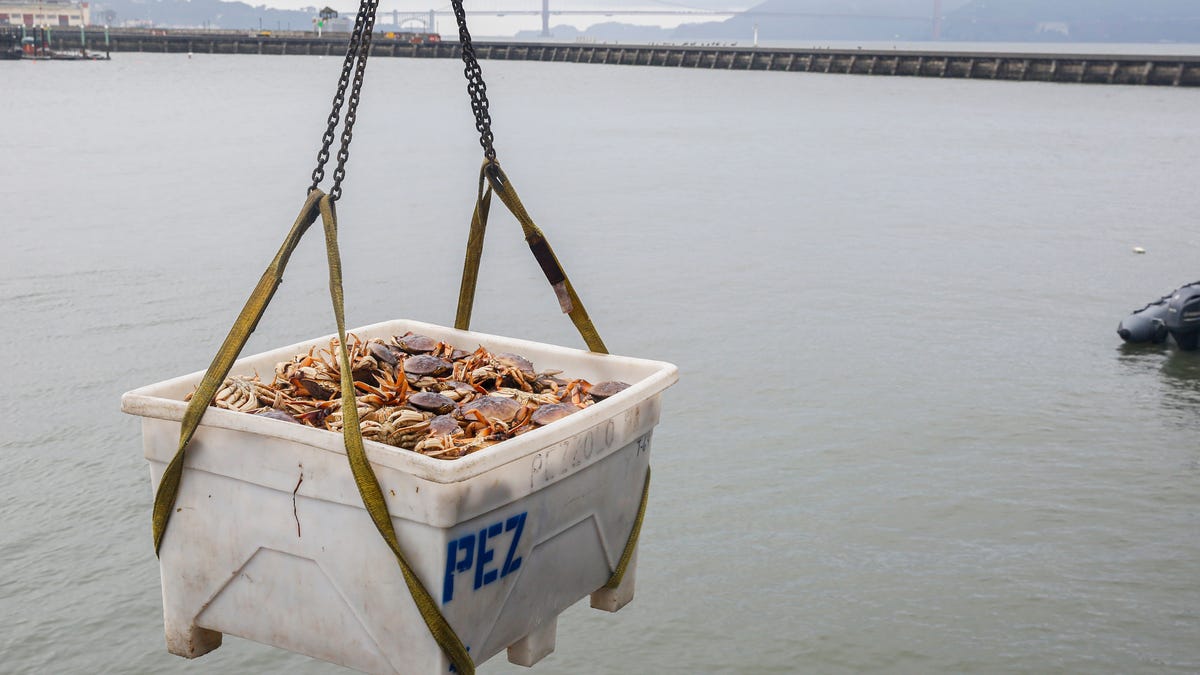Trump’s trade war has been a wildly moving target with severe global economic implications. The most recent announcement and subsequent 90-day pause of tariffs affecting thousands of imports from dozens of countries sent the stock market reeling but what could sweeping tariffs on China and other countries mean for food and grocery prices?
Hours before the pause on the Trump Administration’s newest tariffs was announced, CNET spoke with Russell Hillberry, professor of agricultural economics at Purdue University, to learn how the “reciprocal” tariffs could affect the grocery costs for everyday shoppers in the US.
Read more: Thinking About a Costco Membership? Here’s How Much Cheaper Groceries Are
If you’re just catching up, on April 2, President Trump announced sweeping tariffs on dozens of countries, including China, Japan and the European Union. Days later, on the day the tariffs went into effect, he paused the majority of the tariffs for 90 days. Conversely, the sweeping tariff on Chinese imports was increased to 145%, Politico reports. In response, China increased tariffs against the US to 125%, bringing the US-China trade war to a boil.
While it’s still unclear whether the Trump Administration will extend the 90-day pause on the rest of the previously announced tariffs, the large tariff on China could still have an impact on American food costs.
Here’s everything you need to know about what is happening right now and what could happen if the additional tariffs go back into effect, according to Hillberry.
Your groceries might get more expensive if Trump’s sweeping tariffs come to fruition.
Do tariffs implemented by the US cause prices for US consumers to rise?
“Yes.” Hillberry said. “The US gets different products from different areas of the world. The goods are being sold for a certain amount and when they arrive at the port [in the US], there’s an extra charge [or tariff] on top of whatever the value is at the port.”
That means that if items are imported to the US from China right now, when that item gets to the US, there will be an extra 145% charge on top of the original buying price when it arrives at the port. The majority of that extra cost from tariffs is typically passed on to the consumer.
If the tariff was 10%, he estimated that roughly only 8% of that extra cost would be passed on to the consumer, which wouldn’t make too much of a jaw-dropping difference to consumers especially on lower-cost items, such as groceries. However, the larger the tariff, the larger the price increase.
Initially, the tariffs varied. For example, the European Union — where the US gets a lot of its wine and cheese — is facing a 20% tariff with more potential tariffs on the horizoz.
Will grocery prices increase because of tariffs?
If all of the tariffs that Trump announced on April 2 go into effect after the 90-day pause, Americans can expect to see an increase at the grocery store — and possibly a change in what’s available on the shelves.
While China is not a large importer of food for the US, many of the countries that were slapped with tariffs on April 9 (before the pause) are.
These Fast Food Chains Hiked Their Prices the Most Last Year
Watch out for skyrocketing seafood prices
Seafood is one food category that may get significantly more expensive from tariffs.
“The things that [the US] doesn’t grow at scale, especially fish and shrimp, are coming largely from Asia, India, Vietnam, places like that,” Hillberry said. “So those are going to be up 20 to 50% at the port and maybe a little bit less at the grocery store.”
Will certain products disappear all together?
The tariffs may cause supply issues leading to empty shelves and fewer options for shoppers.
This is a possibility if the tariffs go back into effect, according to Hillberry.
“One thing that isn’t appreciated by the president is that largely countries have other buyers they can sell these things to,” Hillberry said. “So if we decide we don’t want them, they’ll sell them somewhere else. And it may be that the supply chain can’t justify the added costs that go with the tariffs, so some things might not be there.”
Coffee and bananas are two items that could jump in cost
Most coffee beans are imported, which puts them at risk for a price hike.
While most foods will still be available, tariffs will cause a price spike and potential scarcity in key imports.
“Coffee and bananas are going to come in, for sure, they’ll just be more expensive,” Hillberry stressed. “I wouldn’t expect these things to vanish but I think you can expect less variety available at the supermarket because of the tariffs. But the main effect will be on prices.”
Many of the Avocados, tomatoes and berries that the US consumes are grown in Mexico, so those products could also see a price hike related to tariffs.
What are the chances the sweeping tariffs go back into effect?
It is unclear but before the pause, Hillberry predicted that the Trump Administration would abandon the tariffs because they’re too painful or that Congress would step in to stop the tariffs, which could happen if they go back into effect.
“I really don’t think that these are permanent features of the landscape,” Hillberry said. “But, you know, once tariffs go up, it does take a while for them to go down again. So I would think that on the food angle, things will be more expensive, not as good, lower quality, and some goods will disappear.”
Read the full article here


